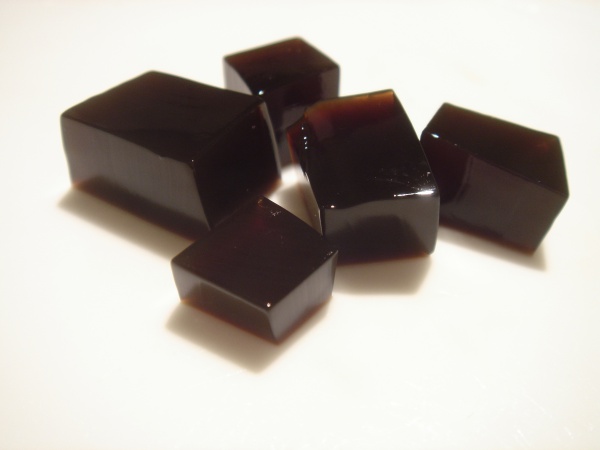Facts About Grass jelly
Grass jelly, also known as leaf jelly or herb jelly, is a cherished dessert in East Asia made from the Platostoma palustre plant. It boasts a mild, slightly bitter taste and is typically enjoyed chilled with various toppings, such as fruit, or added to bubble tea. Grass jelly can often be found in Asian supermarkets around the world.
Nutritionally, a 330g serving of grass jelly provides 44g of carbohydrates, 2g of dietary fiber, and 2g of protein. It contains no fat, vitamins, or minerals.
The process of making grass jelly is quite elaborate. It begins with boiling aged and oxidized stalks and leaves of the Platostoma palustre plant with potassium carbonate for several hours. Starch is then added, and the mixture is left to cool into a jelly-like consistency. Once set, the jelly can be cut into cubes or other shapes and mixed with syrup. Grass jelly is reputed to have cooling properties, making it a popular treat during hot weather.
The serving styles of grass jelly vary by region. In Mainland China, Hong Kong, and Macau, it is often mixed with sugar syrup or combined with ingredients such as mango, sago, or milk. In Indonesia, grass jelly, known as cincau, can be made from different plants, including Platostoma palustre, Melastoma polyanthum, or Cyclea barbata. Indonesian grass jelly has a distinct mild leafy flavor and is frequently enjoyed with sugar water, syrup, or coconut milk.
In Malaysia, Singapore, and Brunei, grass jelly is a staple in desserts like ais kacang and cendol, as well as in drinks such as soy milk. In the Philippines, it is known as gulaman and is used in various refreshments and desserts. In Taiwan, grass jelly is incorporated into desserts and drinks, including popular boba drinks and shaved ice. In Thailand, chaokuai (grass jelly) is served with ice and natural brown sugar, or paired with fruits and other Thai desserts. In Vietnam, grass jelly is a common ingredient in sweet bean-based desserts and is often enjoyed with other summer treats like douhua.
Grass jelly truly has a wide array of regional variations and is celebrated in many culinary traditions across Asia.

 Malaysia
Malaysia